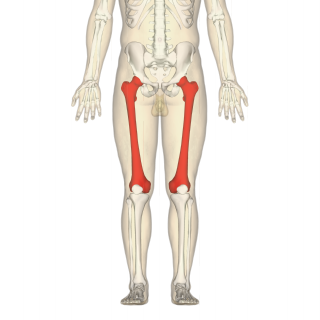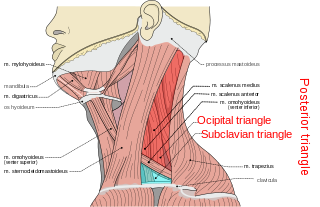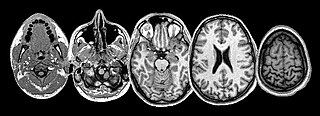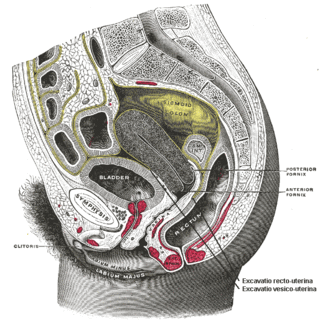A cervix or collum is a neck, that is, a narrowed region of an object (such as a body or a body part). In anatomy, various body parts are called necks, with the neck (of the body) and the neck of the uterus (the uterine cervix) being major examples. A list of examples includes:

Anatomy is the branch of biology concerned with the study of the structure of organisms and their parts. Anatomy is a branch of natural science which deals with the structural organization of living things. It is an old science, having its beginnings in prehistoric times. Anatomy is inherently tied to developmental biology, embryology, comparative anatomy, evolutionary biology, and phylogeny, as these are the processes by which anatomy is generated over immediate (embryology) and long (evolution) timescales. Anatomy and physiology, which study (respectively) the structure and function of organisms and their parts, make a natural pair of related disciplines, and they are often studied together. Human anatomy is one of the essential basic sciences that are applied in medicine.

The neck is the part of the body, on many vertebrates, that separates the head from the torso. It contains blood vessels and nerves that supply structures in the head to the body. These in humans include part of the esophagus, the larynx, trachea, and thyroid gland, major blood vessels including the carotid arteries and jugular veins, and the top part of the spinal cord.

The cervix or cervix uteri is the lower part of the uterus in the human female reproductive system. The cervix is usually 2 to 3 cm long and roughly cylindrical in shape, which changes during pregnancy. The narrow, central cervical canal runs along its entire length, connecting the uterine cavity and the lumen of the vagina. The opening into the uterus is called the internal os, and the opening into the vagina is called the external os. The lower part of the cervix, known as the vaginal portion of the cervix, bulges into the top of the vagina. The cervix has been documented anatomically since at least the time of Hippocrates, over 2,000 years ago.
- Neck, the narrowed region of the body between the torso and the head
- Uterine cervix, usually just called the cervix when the context is implicit
- Cervix vesicae urinariae, the neck of the urinary bladder
- Cervix cornus dorsalis medullae spinalis or cervix cornus posterioris medullae spinalis, the neck of the posterior grey column (the posterior horn of the spinal cord)
- Cervix dentis, the neck of a tooth (a slightly narrowed area where the crown meets the root, such as on a molar tooth)
- Cervix (insect anatomy), a membrane that separates the head from the thorax in insects

The posterior grey column of the spinal cord is one of the three grey columns of the spinal cord. It receives several types of sensory information from the body, including fine touch, proprioception, and vibration. This information is sent from receptors of the skin, bones, and joints through sensory neurons whose cell bodies lie in the dorsal root ganglion.

A tooth is a hard, calcified structure found in the jaws of many vertebrates and used to break down food. Some animals, particularly carnivores, also use teeth for hunting or for defensive purposes. The roots of teeth are covered by gums. Teeth are not made of bone, but rather of multiple tissues of varying density and hardness. The cellular tissues that ultimately become teeth originate from the embryonic germ layer, the ectoderm.
The cervix in insects is a membrane that separates the head from the thorax and is composed of structures from both of these. A pair of lateral cervical sclerites are embedded in the cervix.










